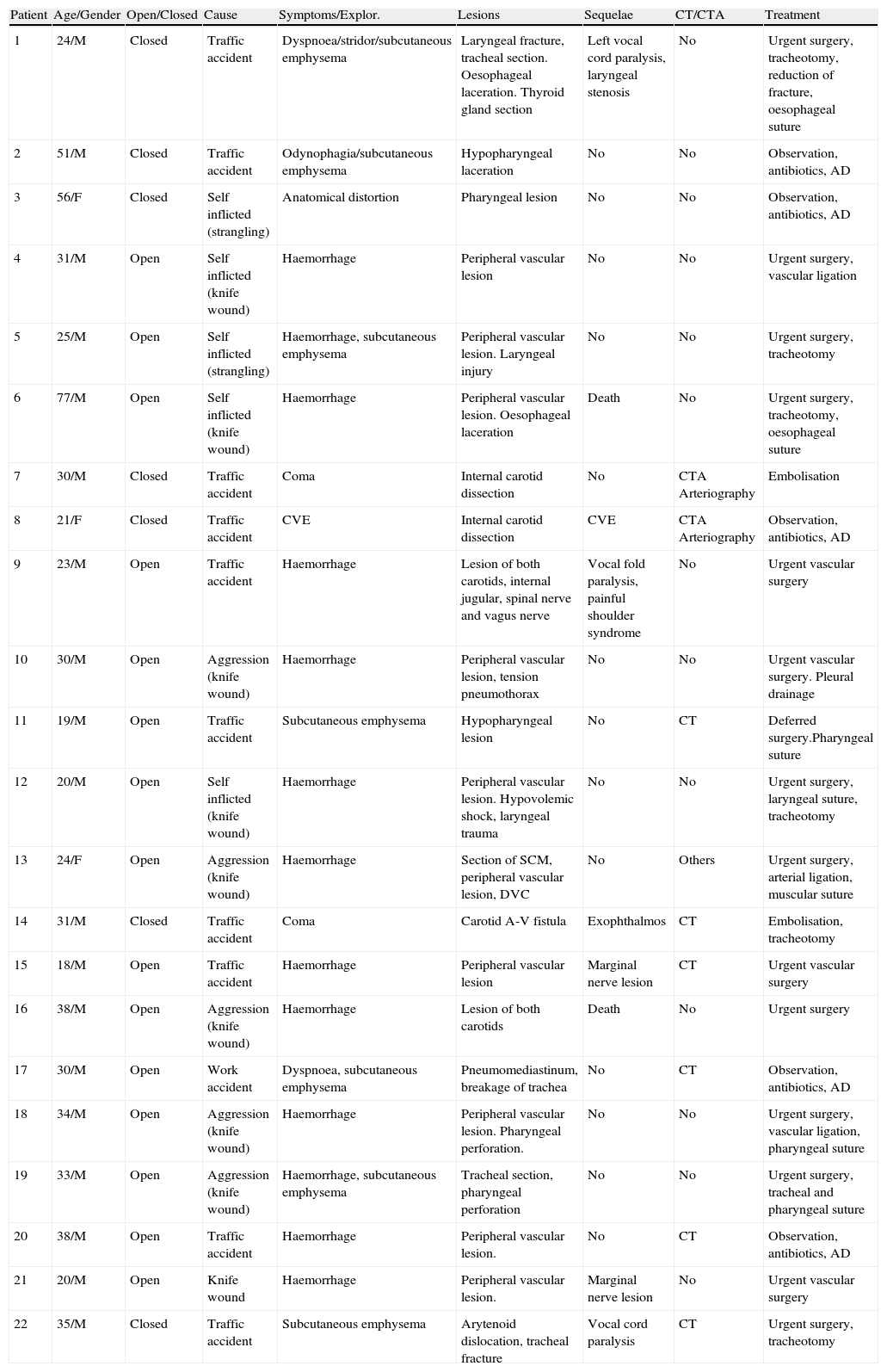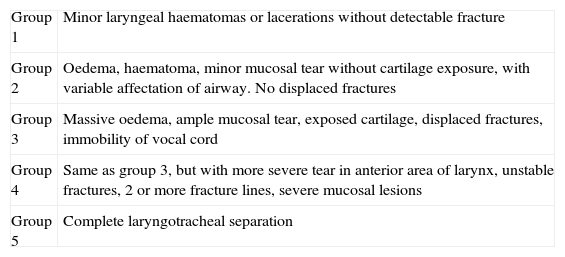Neck injuries are of great clinical interest because they can induce very significant consequences if not handled properly and can even lead to death. The aim of our study was to analyse external deep cervical trauma in our hospital.
Material and methodsA retrospective study of all external deep neck injuries seen in a tertiary hospital over the course of 24 years that involved changes in structures related to otolaryngology.
ResultsTwenty patients were included in our study. From all the injuries, 45% were secondary to traffic accidents, 27% from assault with a knife and 23% from attempted suicide. The injuries were open in 15 (68%) cases and closed in 7 (32%). The most common symptom was bleeding (55%), followed by respiratory disorders (23%). On examination, the most frequent sign was the appearance of subcutaneous emphysema (27%). Only 50% of patients underwent imaging before treatment, most often a neck CT (27%). 59% of patients needed surgery, with 6 patients (27%) requiring a tracheotomy. Two of them died (9%) and 6 suffered permanent complications.
ConclusionsCervical injuries involving ENT structures are rare in our environment, with the most common cause being traffic accidents. It is important to have standardised guidelines for the management of these patients, because they can often develop severe complications or even die very rapidly if not treated properly.
Los traumatismos cervicales tienen un gran interés clínico dado que se asocian a una elevada morbimortalidad si no son manejados adecuadamente. El objetivo de nuestro estudio fue revisar los traumatismos cervicales externos en nuestro hospital.
Material y métodosSe realizó un estudio descriptivo retrospectivo que incluyó a pacientes que presentaron lesiones penetrantes de cuello tratadas por el Servicio de ORL en un hospital terciario durante 24 años.
ResultadosVeintidós pacientes fueron incluidos en nuestro estudio. Un 45% de los casos fueron secundarios a accidentes de tráfico, un 27,3% a una agresión con arma blanca y un 23% a un intento de suicidio. En 15 casos (68%) constituían traumatismos abiertos y en 7 cerrados (31%). El síntoma más frecuente de presentación fue la hemorragia (55%), seguido de trastornos respiratorios (23%). En la exploración, en un 27% de los pacientes se detectó un enfisema subcutáneo. En un 50% de los casos se realizaron técnicas de imagen antes del tratamiento, siendo la más frecuente la tomografía computarizada de cuello (27%). Un 59,1% de los pacientes requirieron tratamiento quirúrgico, precisando una traqueotomía en 6 casos (27%), falleciendo por complicaciones hemorrágicas dos de ellos (9%). Otros 6 pacientes presentaron secuelas permanentes.
ConclusionesLos traumatismos cervicales con afectación de estructuras otorrinolaringológicos son infrecuentes en nuestro medio, siendo las más habituales las secundarias a accidentes de tráfico. Es importante tener protocolizado el manejo de estos pacientes ya que con frecuencia pueden presentar complicaciones severas o incluso la muerte, si no son tratados adecuadamente en un corto período de tiempo.












